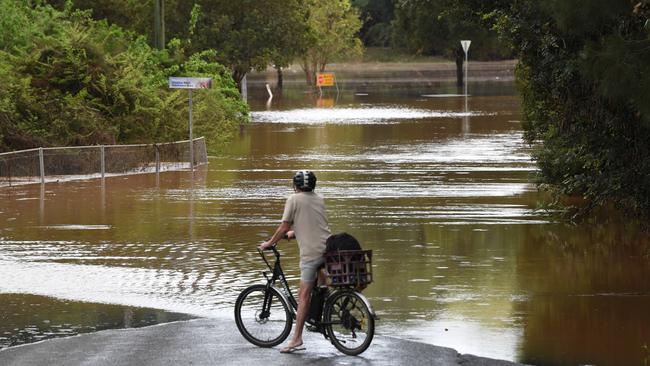APRA policy document reveals insurance, super, cyber to come under scrutiny in year ahead
Australia’s prudential regulator has outlined its priorities over the next 12 to 18 months and the insurance industry is on notice.

Tackling insurance affordability and availability issues is a top priority for the prudential regulator this year, as it increases its engagement with stakeholders in order to help alleviate insurance pressures.
Documents outlining policy and supervision priorities for the next 12-18 months show the Australian Prudential Regulation Authority has highlighted insurance as a top item.
It wants to “help address challenges in availability, affordability and sustainability of insurance in order to improve financial outcomes for policyholders”.
The general insurance industry has been battered by weather events, such as floods, and individual and business policyholders have been subjected to large rises in premiums as cost pressures mount across the economy. The problems have been exacerbated in areas that are more prone to extreme weather events.
“In an environment of rising interest rates and inflation, declining property prices and ongoing geopolitical uncertainty, APRA’s 2023 priorities seek to ensure that we can swiftly address today’s risks as well as new challenges beyond the horizon,” APRA chairman John Lonsdale said.
APRA’s documents said it would develop more granularity in insurance data collections to “identify and respond” to insurance availability, affordability and sustainability concerns.
“The problems are complex and potential solutions are multifaceted, requiring a collaborative approach across industry, regulators, government and consumers,” the documents said.
“Accordingly, APRA has increased its engagement with stakeholders and this will continue over the next 12 months.
“However, insurers have an important role, individually and collectively, in supporting the availability, affordability and sustainability of insurance for the Australian community.

“APRA is also encouraging industry leadership and innovation to help address availability and affordability concerns, while shoring up contingency planning in the event of a crisis.”
Analysis by banking analyst Brian Johnson last month said that, along with markedly higher interest rates, rising insurance premiums, slower population growth and Christmas credit card debt would contribute to a steep drop in demand for housing credit and home prices this year.
His report said home and contents, and car insurance premium rises had exceeded inflation since late 2016 and were expected to increase further due to rising global weather-related insurance claims and declining allocated reinsurance capital.
The regulator’s documents said it would contribute to the Hazards Insurance Partnership introduced by the federal government, which brings together industry, government and stakeholders together to tackle extreme weather risks.
But APRA said it had deferred a review of its guidance on insurance product design, underwriting and risk management until 2024-25.
Also in the insurance sector, the regulator said during 2023 it would oversee the industry conducting climate vulnerability assessments, similar to those already undertaken by the nation’s largest banks.
In the banking sector, credit quality and liquidity would be among the key focus points, the regulator said.
Mr Lonsdale told The Australian on Monday that banks would be helped in 2023 by strong levels of capital, liquidity and robust lending standards, but noted APRA was closely monitoring the slowdown in the economy and bad debt levels to gauge whether loan serviceability buffers were at the optimum level.
The regulator can tweak the buffer levels if it considers necessary, if credit growth sinks or household debt climbs across the economy relative to income.

The APRA documents also stipulated the regulator’s priorities for the superannuation sector, including targeting substandard governance and underperformance in super funds, while putting a strong focus on cybersecurity, operational resilience and risk culture across industries.
Within super, APRA will hone in on board capabilities, tenure, management of conflicts of interest and strength of internal control systems.
The regulator will examine super funds’ valuation of unlisted assets, and will dig into how prepared the funds are for the changing investment environment, all while encouraging poor performers to exit the industry.
“The duty to act in the best financial interest of members in relation to expenditure decisions continues to be an important determinant of member outcomes,” the regulator said.
“Business models that are challenged in delivering long-term sustainable, competitive outcomes for members will continue to receive scrutiny from APRA, including consideration of where consolidation will be beneficial.”
On investment markets, the regulator noted the recent shift in response to inflation, higher interest rates and geopolitical factors.
“APRA will assess how trustees are preparing for the changing environment and the adequacy of their practices to respond to market stresses, including possible liquidity stress.
“APRA will take a targeted approach in this work, driven by risk insights from the information it collects and supervisory activities.”
The spate of high-profile cyber attacks in the local market, meanwhile, will cause the regulator to “intensify scrutiny of operational and cyber risk-management practices” across industries.
APRA warned it now has “heightened expectations” surrounding companies’ ability to detect weaknesses and implement remediation plans.
Mr Lonsdale earlier this week said APRA’s standard on cyber attacks and information security would be “rigorously applied”, putting companies on notice to improve their performance following high-profile data breaches last year.
“Operational resilience, including cyber preparedness, continues to grow in importance as a supervisory priority, with the significant data breaches at Optus and Medibank late last year underscoring just why,” he said.
A further priority for the financial regulator would be to keep a close watch on innovations in financial products and services, including crypto assets.
APRA said it would continue to engage with companies to ensure business models and practice changes, such as banking as a service, new product development, strategic partnerships and structural changes to accommodate non-banking business, are subject to “robust risk management and appropriately capitalised”.
The regulator said that it expected companies involved in activities related to crypto assets “to proactively engage with their APRA supervisor as they develop plans”.



To join the conversation, please log in. Don't have an account? Register
Join the conversation, you are commenting as Logout